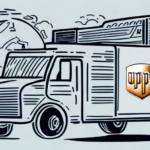How to Calculate UPS Shipping Transit Time
Accurately calculating UPS shipping transit time is essential for ensuring timely deliveries and maintaining customer satisfaction. Transit time refers to the duration it takes for a package to travel from its origin to its destination. This guide explores the key factors involved in determining UPS shipping transit time, providing detailed insights to help businesses optimize their logistics operations.
Understanding Transit Time and Its Importance
Transit time encompasses the period from the pickup of a package at the origin location until its delivery at the final destination. It includes all intermediate transit points, such as sorting facilities and distribution centers, that the package passes through during its journey.
Accurate transit time calculations are critical for several reasons:
- Customer Satisfaction: Meeting delivery expectations enhances customer trust and loyalty.
- Cost Management: Longer transit times may increase shipping costs due to additional resources required.
- Resource Allocation: Efficient transit time estimation allows businesses to better manage inventory and logistics.
According to a study by Statista, 79% of consumers consider delivery times when making online purchase decisions.
Determining Origin and Destination Zip Codes
Identifying the correct origin and destination zip codes is fundamental to calculating accurate transit times. Zip codes play a crucial role in the U.S. postal system by facilitating the routing of packages through the most efficient pathways.
To ensure precision:
- Use specific zip codes for the exact pickup and delivery locations rather than general city-wide codes.
- Utilize reliable tools such as the USPS Zip Code Lookup or Google Maps to verify zip codes.
Accurate zip codes help prevent delays caused by misrouting, ensuring that packages reach their intended destinations promptly.
Selecting the Appropriate UPS Shipping Service Level
UPS offers a variety of shipping service levels tailored to different delivery needs and budgets. Choosing the correct service level is crucial for meeting delivery timelines without incurring unnecessary costs.
Key factors to consider when selecting a service level include:
- Package Size and Weight: Heavier or bulkier packages may require specific service options.
- Delivery Time Constraints: Urgent shipments may necessitate expedited services like UPS Next Day Air.
- Destination Distance: Longer distances might influence the choice of a specific service level.
- Tracking and Insurance: Assess the level of tracking and insurance provided with each service option.
For a comprehensive comparison of UPS service levels, refer to the UPS Time and Cost Calculator.
Utilizing UPS Tools: Time and Cost Calculator & Transit Maps
UPS provides several tools to aid in calculating transit times and shipping costs:
UPS Time and Cost Calculator
The UPS Time and Cost Calculator allows users to estimate transit times and shipping costs based on various factors such as origin, destination, package weight, and chosen service level.
UPS Transit Maps
The UPS transit maps visually represent the estimated time required for packages to travel between different regions or zones. These maps help businesses understand potential delivery timelines and plan shipments accordingly.
It's important to note that these estimates are subject to change due to external factors like weather conditions or operational delays.
Factors Influencing UPS Shipping Transit Time
Several elements can affect the transit time of UPS shipments:
- Time of Day: Packages dropped off after UPS's daily cutoff times may not be processed until the next business day.
- Holidays and Peak Seasons: Increased shipping volumes during holidays can lead to delays.
- Package Type: Special handling requirements for hazardous materials or fragile items can extend transit times.
- Weather Conditions: Adverse weather can disrupt transportation and delivery schedules.
According to UPS's Service Reliability Index, transit times can vary based on these factors, and it's advisable to account for potential delays in logistics planning.
Tracking and Managing Your UPS Shipment
UPS offers a robust tracking system that allows customers to monitor their packages in real-time. Utilizing UPS's tracking tools can help businesses manage their shipments effectively and provide updates to customers.
To track a package:
- Obtain the tracking number provided at the time of shipment.
- Visit the UPS Tracking page or use the UPS mobile app.
- Enter the tracking number to view the current status and location of the package.
Tracking information may not always be up-to-date due to unforeseen circumstances. If tracking indicates delays, contacting UPS customer service can provide additional insights and assistance.
Best Practices for Accurate Transit Time Calculations
Implementing best practices ensures the accuracy of transit time calculations and enhances the efficiency of the shipping process:
- Verify Address Details: Ensure all shipping information, including zip codes and addresses, is accurate and complete.
- Select the Appropriate Service Level: Choose a UPS service that aligns with delivery deadlines and budget constraints.
- Utilize UPS Tools: Make effective use of the UPS Time and Cost Calculator and transit maps for informed decision-making.
- Plan for Peak Periods: Anticipate increased shipping volumes during holidays and plan shipments accordingly to avoid delays.
Comparing UPS Shipping Transit Times with Competitors
While UPS is a leading shipping provider, comparing its transit times with other carriers like FedEx, USPS, and DHL can help businesses choose the most suitable option for their needs.
For example, FedEx may offer faster delivery options for certain routes, while USPS might provide more cost-effective solutions for lighter packages. Evaluating transit times, costs, and service options across different carriers ensures optimal shipping strategies.
Utilize tools such as the FedEx Rate Finder or the DHL Shipping Calculator to compare transit times and costs effectively.
Conclusion: The Importance of Accurate Transit Time Calculations in Logistics Management
Accurate calculations of UPS shipping transit times are essential for effective logistics management. By understanding the factors influencing transit times and utilizing the available UPS tools, businesses can ensure timely deliveries, optimize shipping costs, and enhance customer satisfaction. Implementing best practices and regularly reviewing shipping strategies will contribute to more efficient and reliable shipping operations.






















